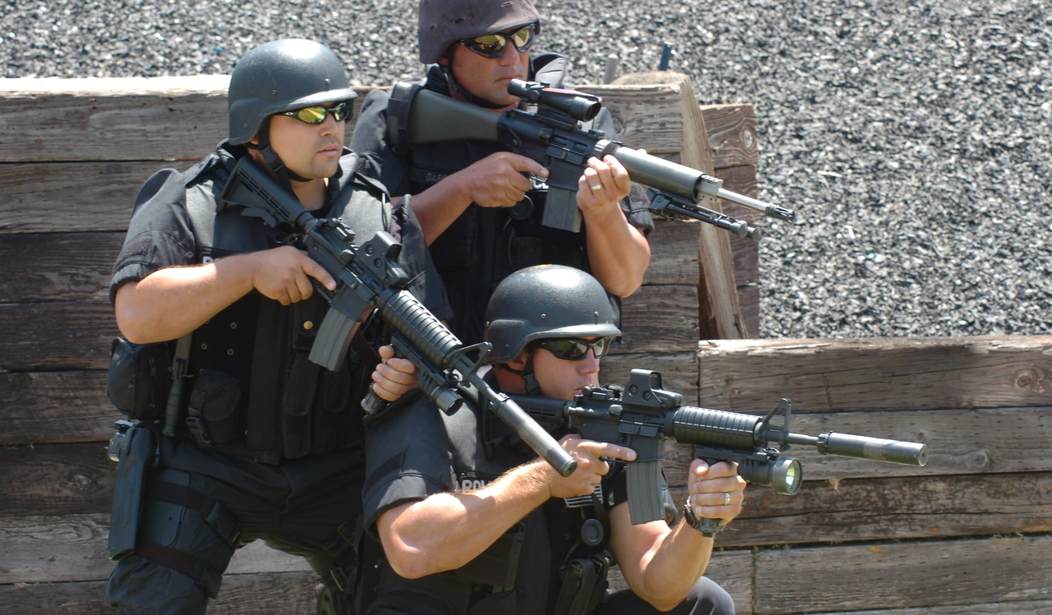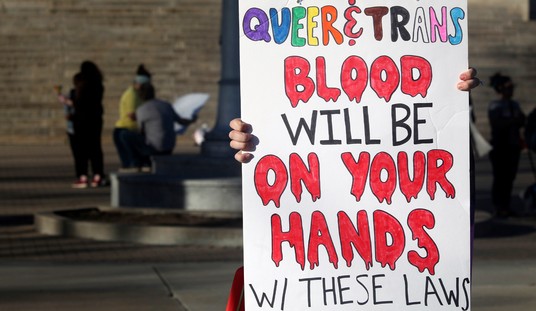WASHINGTON – The recent revelations about the federal government’s surveillance programs underscore a subtle trend in the U.S. that should raise some concerns about personal freedoms in America.
According to John W. Whitehead – founder of the Rutherford Institute, a nonprofit civil liberties and human rights organization – more Americans might find themselves in increasingly dangerous situations as SWAT teams and SWAT-team tactics are used more frequently in routine law enforcement activities.
Violent crime in America has been on a steady decline since the mid-1990s. No one knows exactly why criminal activity is down, but experts point to a variety of factors for the continuing decline in overall violence. They cite the end of the crack cocaine epidemic and changes in technology that include a substantial increase in surveillance cameras, among other reasons, as being responsible for bringing down crime.
Despite falling crime rates, some of the nation’s major cities are increasing the size and scope of their police agencies. For example, the New York Police Department (NYPD), the biggest police force in the nation, boasts more than 34,000 officers patrolling the streets of New York. Other cities with increasingly large police forces include Los Angeles (which has approximately 10,000 officers) and Chicago (13,400).
More robust police departments have also been credited with the fall in criminal activity. Nevertheless, other cities without similar increases in their police force, including cities like Dallas and Seattle, also saw decreases in crime rates during the 1990s.
In fact, both of these cities have reduced the size of their police departments, which has led some experts to question whether there is a strong correlation between department size and declining crime rates.
Notwithstanding the lack of evidence, police forces across the nation have not only continued to grow but have ramped up the scope of their activities.
In a Pulitzer prize-winning investigative series, the Associated Press revealed an NYPD surveillance program of Muslim communities. The AP investigation detailed how, after the terrorist attacks of Sept. 11, NYPD commissioner Ray Kelly sought to transform elements of the nation’s largest police force into a miniature CIA, with the help from the intelligence agency, which is prohibited by law from spying on Americans.
Since President George W. Bush declared war on terrorism in the early 2000s, there has been a crucial shift in law enforcement policies.
In an effort to remedy their relative inadequacy to combat terrorism on U.S. soil, police forces throughout the nation adapted their operations to meet the demands of fighting against a different type of threat.
American police departments increased their use of military-grade equipment to perform counterterrorism duties. To assist them in deploying this new equipment, police departments sought and received extensive military training and tactical instruction.
Initially, only the largest metropolitan police departments maintained SWAT teams, and they were called upon only when a truly military-level response was necessary. In 1984, around 25 percent of towns with populations between 25,000 and 50,000 people had a SWAT team. That number rose to 80 percent in 2005. The number of annual SWAT deployments in the U.S. has gone from a few hundred in the 1970s to around 80,000 today. According to author and investigative reporter Radley Balko, there are an estimated 150 SWAT raids in America every day.
Under the 1033 Program, Congress has allowed the Department of Defense to transfer surplus military goods to state and local police agencies, including high-powered weapons and assault vehicles. Last year, the program stopped the transfer of firearms to police forces because of concerns that state coordinators were not keeping adequate inventory records. Suspension of the firearms distribution programs is expected to be lifted in October.
Recently, Whitehead discussed at the Heritage Foundation some of the startling findings he uncovered while doing research for his latest book, A Government of Wolves: The Emerging American Police State.
In his book, Whitehead warns of the gradual transformation of America into a police state in which stronger law enforcement and a robust surveillance apparatus might give rise to a state governed by the strong arm of the law.
He contends that the lines between foreign and domestic surveillance and between law enforcement and military agencies are dissipating. This has resulted in an increasing number of military-style SWAT raids and the rapid growth of the government surveillance programs led by the National Security Agency (NSA).
In addition, he argues, the use of high-technology surveillance systems and the militarization of the police force have weakened the Fourth Amendment’s protection against unreasonable search and seizure and the rarely invoked Third Amendment, which forbids the government from quartering soldiers in civilians’ homes without their permission.
Whitehead has been researching the growth of the NSA since the 1980s. But the rapid growth under the Obama administration is astonishing, he said.
Whitehead said NSA personnel told him that a new facility in Utah has a computer that downloads 1 trillion bytes of information from the Internet every month.
“The new computer they have is so powerful, it can actually download the entire content of the Library of Congress in six hours,” Whitehead said.
NSA has been under fire for its collection of phone and email records under its PRISM program, which was leaked to the press by former NSA contractor Edward Snowden. The Washington Post reported that Obama presided over the program’s “exponential growth.”
Last month, an amendment to a military spending bill sponsored by Rep. Justin Amash (R-Mich.) that would have terminated the government’s funding to collect the phone records of America citizens was narrowly defeated on the House floor. President Obama opposed the legislation, saying the “blunt approach” was not the product of an informed and open process.
The Department of Homeland Security (DHS) and the FBI are involved in the same type of surveillance, Whitehead mentions in his book.
He also talks about the often criticized “fusion centers” – data collection agencies created after the terrorist attacks of Sept. 11 that fall under DHS supervision. These centers, with help from the NSA, monitor everything from web searches to text messages, emails, and phone calls. This data is then passed on to government agencies like the CIA and the FBI. As of 2009, the government has admitted to having at least 72 fusion centers.
Shortly following the creation of fusion centers, their focus shifted from this exclusive interest in the dissemination of terrorism-related intelligence to one of “all hazards” to the public – a broad term used to describe virtually anything that may be deemed a threat to the public.
The Senate Permanent Subcommittee on Investigations uncovered widespread problems at fusion centers. The panel’s October 2012 report found significant intelligence gaps, frequent communications breakdowns, and pervasive bureaucratic waste.
At the book discussion, Whitehead cautioned that instances in which the growing power of the states clash with personal freedoms will only get more common until the American people stand up and refuse to accept what he calls “a major infringement on our constitutional liberties.”








Join the conversation as a VIP Member